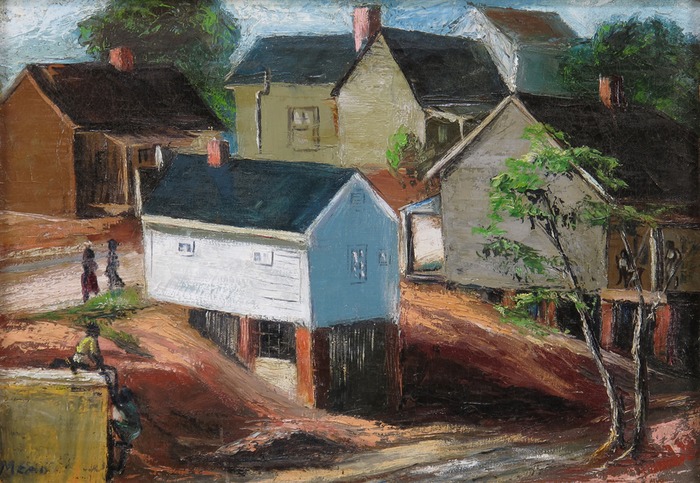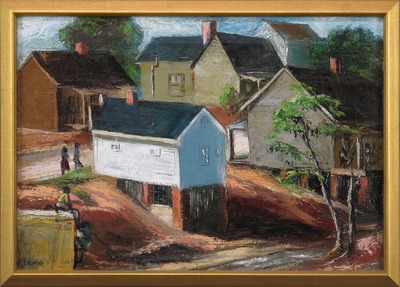Biography
Ben Mead

A commercial artist and fine-art painter based in Amarillo and Dallas, Texas, Ben Mead did primarily magazine and book illustration and was especially focused on Southwestern themes. He was born in Bay City, Texas and attended Texas schools in Amarillo, Lamesa and Plainview, and in Tulsa, Oklahoma. From 1923 to 1926, he studied at the Art Institute of Chicago with Jerome Rozen and Charles Schrolder. Returning to Amarillo, he worked as an advertising designer and then moved briefly to San Antonio, where he was an illustrator for an advertising agency.
In 1932, he returned to the Amarillo area, settling in a ranch home in Palo Duro Canyon. He gave private art lessons and taught at Amarillo College. He also took a job with the Witte Museum of San Antonio sketching Indian pictographs found near Barksdale in Edwards County.
Between 1941 and 1967, Mead, with the exception of two years when he was in Chicago, lived in Dallas where he worked as an art director for an advertising agency. Upon retirement, he devoted himself to painting, much of it referencing the historical research he had done with the pictographs.
In 1981, he moved near Solvang, near Santa Barbara, California.
Source:
John and Deborah Powers, "Texas Painters, Sculptors & Graphic Artists"
Biography from Panhandle-Plains Historical Museum
Born at Bay City, Texas, Mead moved to Amarillo as a teenager. While in high school he did theatrical painting and was sports editor for the "Amarillo Daily News". Mead then studied at the Art Institute of Chicago for three years and with San Antonio painter Hugo D. Pohl. In San Antonio in the mid-1920s he worked as a solo commercial artist and as staff artist at the Witte Museum from 1930 to 1932. While on the Witte staff, he sketched at length in the Big Bend and far southwest Texas.
Mead returned to Amarillo in 1932 where he taught art at Amarillo Junior College and at his Amarillo and Palo Duro Canyon studios for a dollar a lesson. He also did extensive sketching all over the Panhandle, especially at historic sites such as Tascosa and the LX, JA, and Harrell ranches.
Under President Roosevelt's New Deal Mead painted two murals for the Panhandle-Plains Historical Museum's Pioneer Hall in 1934 and 1940, and a mural of Coronado for the Quay County Courthouse at Tucumcari in 1939. He also submitted sketches for the 1939 Amarillo Section of Fine Arts Competition. Inspired by his success at mural painting, the Bivins family commissioned two Mead murals of the LX Ranch in 1940 for the Bivins Building on Polk Street in Amarillo. Mead also completed his third Pioneer Hall mural in 1956.
From 1941 to the early 1980s, Mead worked as a commercial artist in Dallas, primarily for the Tracy-Locke agency where he lived until moving to California in the early 1980s. In 1973 he appeared in an episode of the television series "Gunsmoke." After enduring virtual blindness during the late 1970s, a corneal transplant enabled Mead to begin painting again.
A student of Western history, Mead was a member of the Western History Association, Westerners International, the Texas State Historical Association, and the Panhandle-Plains Historical Society. He illustrated numerous publications on the West including Texas folklorist J. Frank Dobie's "Coronado's Children" (1930), "On the Open Range" (1931), "I'll Tell You a Tale" (1960), and "Cow People" (1964). Mead also provided illustrations for "True West", "Old West", and "Frontier Times" magazines and was included in Jeff Dykes's "Fifty Great Western Illustrators". Mead died in California in 1986.


